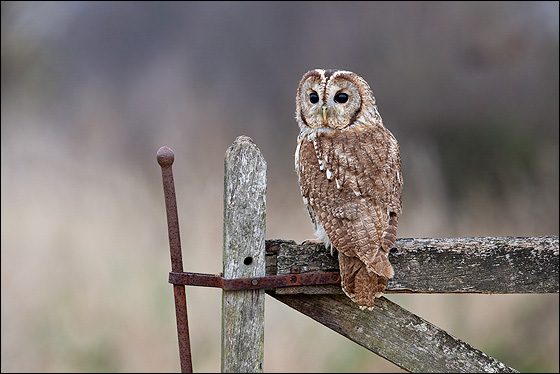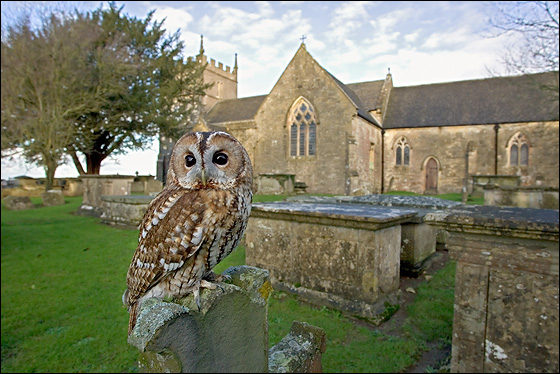Tawny Owl (Strix aluco)
The Tawny Owl benefits from stability. Territories are often traditional, changing hands without any alteration of boundaries. Once they have settled in, birds soon get to know their patches intimately, and learn about the distribution of food from month to month. This experience, and a catholic, variable diet enables them to survive even the harshest conditions.
In broad-leaved woodland, which is the Tawny Owl’s prime habitat, small mammals form the bulk of the diet. In more open areas, however, and especially in areas of human settlement, birds take over. A bewildering number of species of both have been recorded in the diet, including voles, mice, shrews and rats, even Edible Dormice among the mammals, and Starlings, Finches, Pigeons, Thrushes and, especially House Sparrows among the birds. Tawny Owls also regularly hunt for worms on lawns, and may take insects, frogs and fish as well. Their most typical method is to sit on a perch and watch for opportunity, and then grab what they see by at the end of a dive to the ground. Birds may be attacked at their roosts, however and Tawny Owls will also quarter the ground in a slow, searching flight. Adaptable both in diet and feeding method, the Tawny Owl is the most numerous European Owl.
Males make their familiar hooting advertising call in the autumn and early winter, aiming primarily to attract females. Recent research has shown that a male’s sound is remarkably revealing of its performer, enabling a potential mate to be well informed before making an approach. Males with a greater body weight make lower pitched and more tremulous hoots, and the hoots of those with a parasite infection are both higher in pitch and shorter in length. The more aggressive the males, the more frequently they hooted. Human females would be grateful for such information in the public domain.
Although the Tawny Owl is common in many areas inhabited by people, it is not easy to see, being primarily a nocturnal species hunting between dusk and dawn. By day it hides away, usually in thick cover high up in a tree, and with its mottled brown plumage can be almost impossible to see. The first sign that a Tawny Owl is about may come from the reaction of small birds; when they see an owl they club together and call angrily at the owl, being annoying but keeping just out of reach. An owl mobbed like this is often forced to leave its roosting site to find an alternative.


